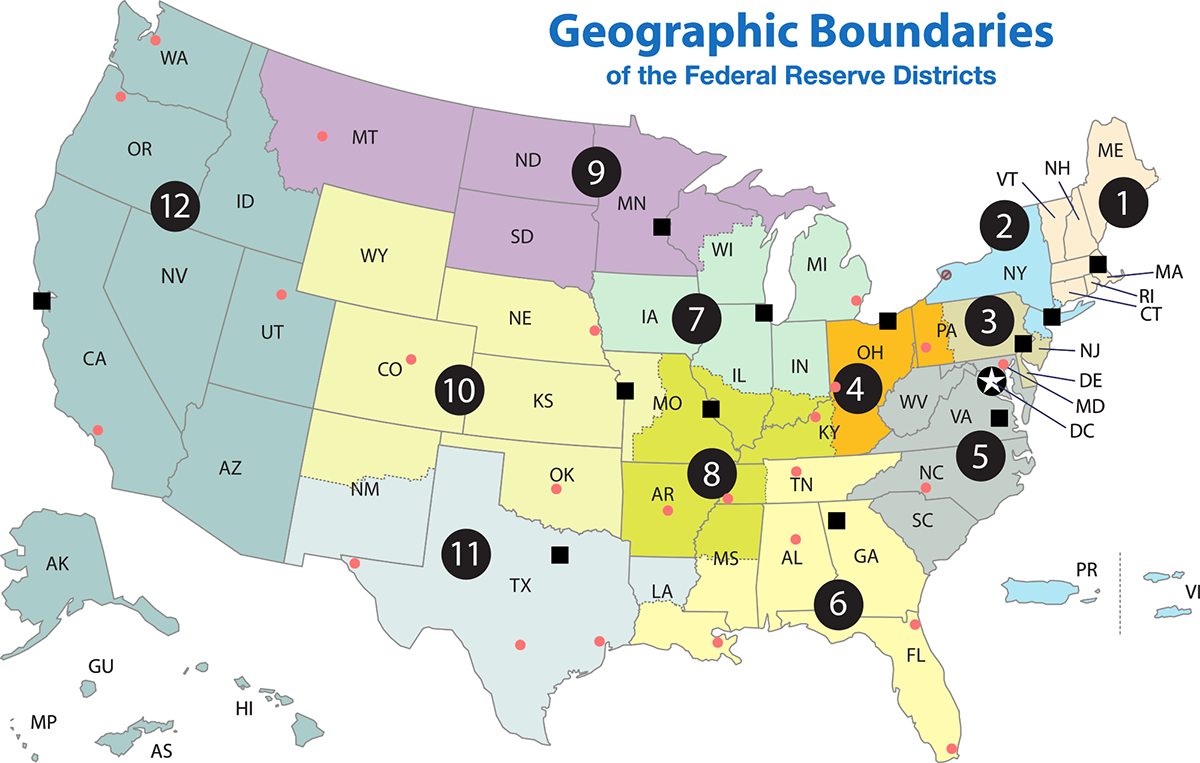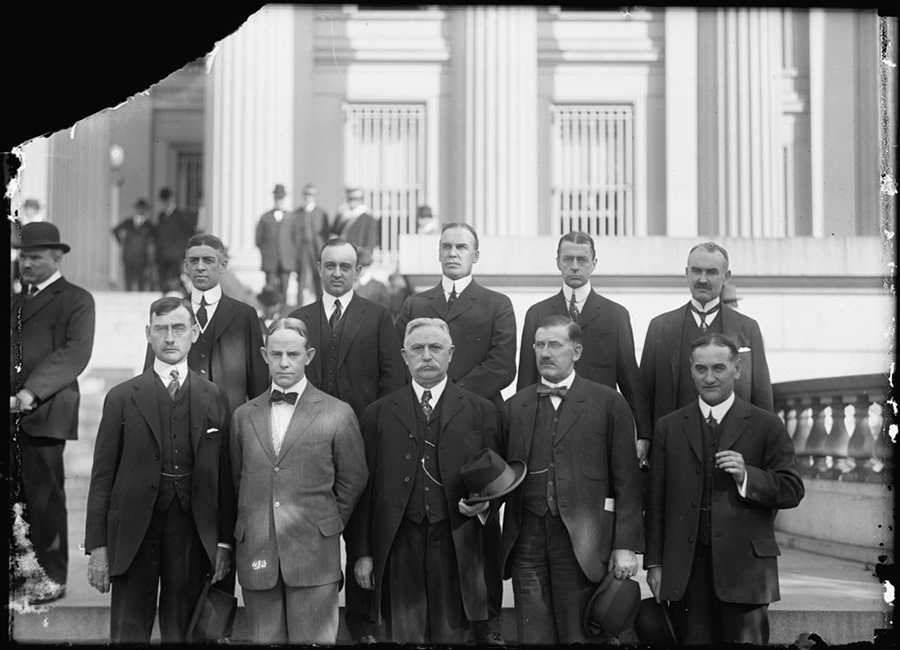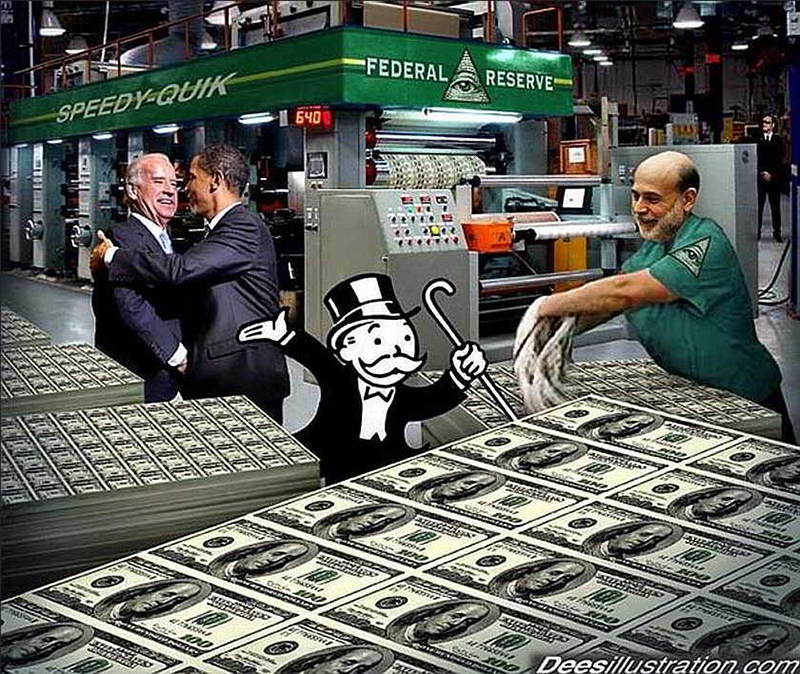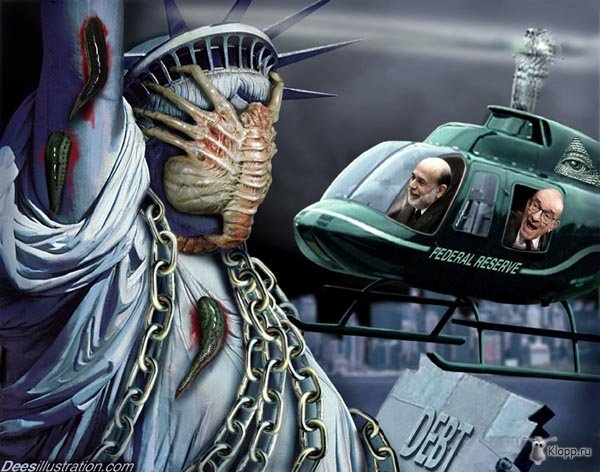“The United States Federal Reserve announced Wednesday that it will start drawing down (i.e. “tapering”) its multibillion-dollar quantitative easing policies in 2014. The Fed will begin tapering its $85 billion monthly purchases of Treasuries and Treasury mortgage-backed securities by $5 billion each starting in January.”
100 years ago, this December, the United States Congress created a central bank today, we know it as the Federal Reserve Bank of the United States. What most people don’t know is that the bank isn’t a federal entity and candidly, it really has nothing in reserves.
Is the Federal Reserve Good for the United States? Is it Even Possible to Get Rid of it?
10 years ago, virtually no American knew anything about the Federal Reserve Bank. Most thought it was a government agency, an entity that helps to create and protect U.S. currency and our economy. Then came along the national rise of a Congressman from Texas by the name of Ron Paul.
One of the most impressive things about the career of now retired Congressman Ron Paul was the national attention he drew to the Federal Reserve Bank.
It was Congressman Paul who made millions of Americans aware of a simple truth. That the single entity with the most power and control over the U.S. dollar is not accountable to the American people.
So What Exactly is the Federal Reserve?
To begin with, it is a private bank that serves as the exclusive bank of the U.S. government. Though it was created by Congress, the Federal Reserve does not answer to Congress. The President himself doesn’t have direct oversight.
So What Else Does the Fed Do?
The Fed regulates financial institutions, manages the nation’s money and has incredible influence over the economy. The fed can raise and lower interest rates, in fact, they are the only entity able to do so.
That is very big deal because with that power, the fed is able to control the U.S. economy. can cause the life savings of Americans to lose value through inflation, controls the value of your investments, and even impacts employment rates and manufacturing outputs.
An awful lot of power for an entity that has no accountability to the U.S. people. so where did this central bank come from?
A writer by the name of G. Edward Griffin blew the modern lid off this story when he wrote a book called “The Creature from Jekyll island.”
He spoke to me via Skype.
Ben: For folks who don’t know the name, why is the book called “The Creature from Jekyll Island”?
Griffin: Sure, because there is a lot of significance to it. Many people think it’s just a tricky title to attract attention which frankly that’s some of the motive for doing that but Jekyll Island is a real island, Ben, as you well know, and it’s significant because it was on that island back in 1910 that the Federal Reserve was created. And that’s an interesting fact of history that why should something as important as the Federal Reserve system be created any place other than Washington D.C.
Ben: How did the meeting at Jekyll Island in 1910 become a central bank in 1913?
Griffin: Back in 1910 when all of this happened, there was a great deal of concern in Congress and among the American people about this concentration of financial power in the hands of a small group of companies, financial centers, on Wall Street. The big banks, the big insurance companies, the brokerage houses and so forth. There was a clamor at that time for legislative reform, there’s that word that we hear so much about. What happened is that the banks decided that the public was going to get its reform one way or the other, so why should they just sit back and let it happen? They decided to take the lead in that parade and make sure that they provide the so-called reform. They were going to draft this legislation and of course, if it were known that they were the ones drafting the reform legislation, it wouldn’t sell too well. So there had to be a lot of secrecy about that particular period of history. Well what were they concealing? It wasn’t just, they weren’t concealing just the fact that they were the ones writing the legislation to control themselves but when you follow that thread you come to the realization was what they were doing is creating a cartel. You see these were competing banking companies within the industry and this was at the time of history when competition was being replaced by monopolies and cartels and this happened in spades as far as the banking industry is concerned. And on Jekyll Island they created a banking cartel to regulate itself, to set up its own rules, to offer it to the American people as though as it was some kind of banking reform and the stupid politicians in Washington accepted it and they passed this banking cartel agreement into law and they called it the Federal Reserve Act.
It was in 1913 that Congress, in passing the “Federal Reserve Act” violated the U.S. Constitution and essentially granted its power to create money to the Fed banks. Since 1913, the fed has ordered the printing of currency and then loaned it back to the government charging interest. The government levies income taxes to, among other things, pay the interest on the debt.
So when you take a dollar out of your pocket, look at what it says at the top. This is a Federal Reserve Note, currency issued by the Federal Reserve Bank.
In 1964, that changed. President John F Kennedy issued an Executive Order, 11110. It gave the Treasury Department the explicit authority: “to issue silver certificates against any silver bullion, silver, or standard silver dollars in the Treasury.” This means that for every ounce of silver in the U.S. Treasury’s vault, the government could introduce new money into circulation based on the silver bullion physically held there.
These were United States Notes. As a result, of that executive order, more than $4 billion in United States Notes were brought into circulation in $2 and $5 denominations. $10 and $20 United States Notes were never circulated but were being printed by the Treasury Department when Kennedy was assassinated.
After his assassination, The United States Note Project ceased.
Ben: To your knowledge, Mr. Griffin, is that Executive Order that was issued by President Kennedy still active today?
Griffin: The Executive Order is not still in existence. It went through several transitions. First it was absorbed into another Executive Order, it was consolidated into another order, and then finally it was repealed, I think Johnson himself got rid of it. But that’s really not the important question whether it’s still standing or not because it never did represent what many people thought it meant in my view. I checked into the allegation that President Kennedy had taken a stand against the bank and that he was going to put an end to the fiat money and go back to government issued notes. That’s the general idea and that therefore that’s the reason he was killed. Unfortunately or fortunately, whichever the case may be, the record really doesn’t support that at all. And every time I went to try and run down the origins of this myth as I call it, it just fizzled out unless somebody can give me some hard information that I haven’t yet seen. I think it’s just one of those urban myths that is popular.
So what has the Federal Reserve Bank been up to in the past few years? As you probably know, the Fed has been holding interest rates at historically low rates. Meanwhile, the Fed has been creating between $40 and $80 billion dollars a month in U.S. currency. The name you have heard this by, quantitative easing.
The first round of Quantitative Easing came in late 2008 under President George W. Bush. The Fed initiated purchases of $500 billion in mortgage backed securities in order to help resolve the housing crisis. The Fed also cut the key interest rate to nearly 0%.
The economy didn’t improve, but banks sure got a lot of money.
So, under Bernanke, the fed was at it again. The second round of Quantitative Easing was from November of 2010 until June of 2011. The Federal Reserve went to work buying up $600 billion in U.S. Treasury Bonds to spur the economy. But again, it didn’t work.
Part of the reason QE2 failed was because it wasn’t meant to spur the U.S. economy. That $600 billion was given to foreign banks. During the QE2 funding period cash reserves of foreign banks grew from $308 billion to $940 billion
In the fall of 2012, came the beginning of QE3, in this case, the Fed began purchasing mortgage backed securities and treasuries at a rate of $85 billion dollars a month. What made this Quantitative Easing attempt different than others, there is no end to it.
In January of 2013 the Fed began what is called. QE4, an attempt to continue to purchase securities and hold interest rates down until the unemployment rate drops to below 6.5%.
In February of 2014, Janet Yellen will succeed Ben Bernanke as Fed chairman and has already said that her priority is to continue these programs even longer than was originally anticipated. Yellen says that unemployment is a bigger problem than inflation so the for the Fed it will be business as usual.
What you need to know: Is that in 1913, the original charter for the Federal Reserve Bank allowed it to exist for only 20 years. In 1927, the Fed charter was renewed.
Some believe that on December 23rd, 2013, the Fed charter runs out. That at the 100 year anniversary, the Fed will have to be renewed by Congress. Others say that the Fed does not have to be renewed, that it is a permanent entity. That happened they say in 1927 under the McFadden Act.
Whether that is true or not, here is something undeniable, in the 100 years that the federal reserve bank has been in existence, the U.S. dollar has lost 98% of its value.
The purpose of creating the Federal Reserve was to protect the dollar. The Fed hasn’t done that.
The Federal Reserve Bank didn’t stop the Great Depression, the Federal Reserve Bank has done nothing to improve the so called great recession. In fact, some can make the argument that the fed policies under Alan Greenspan in the early 2000‘s and not only helped to create our current situation, but the Fed policies under Ben Bernanke have made the economy worse.
The bottom-line, the one entity that truly has the power to end the Fed is Congress, but if Congress were to do that then Congress would also have to be responsible for fulfilling its constitutionally mandated role to “to coin money” and “regulate the value thereof."
3 WAYS TO SHOW YOUR SUPPORT
- Log in to post comments



















